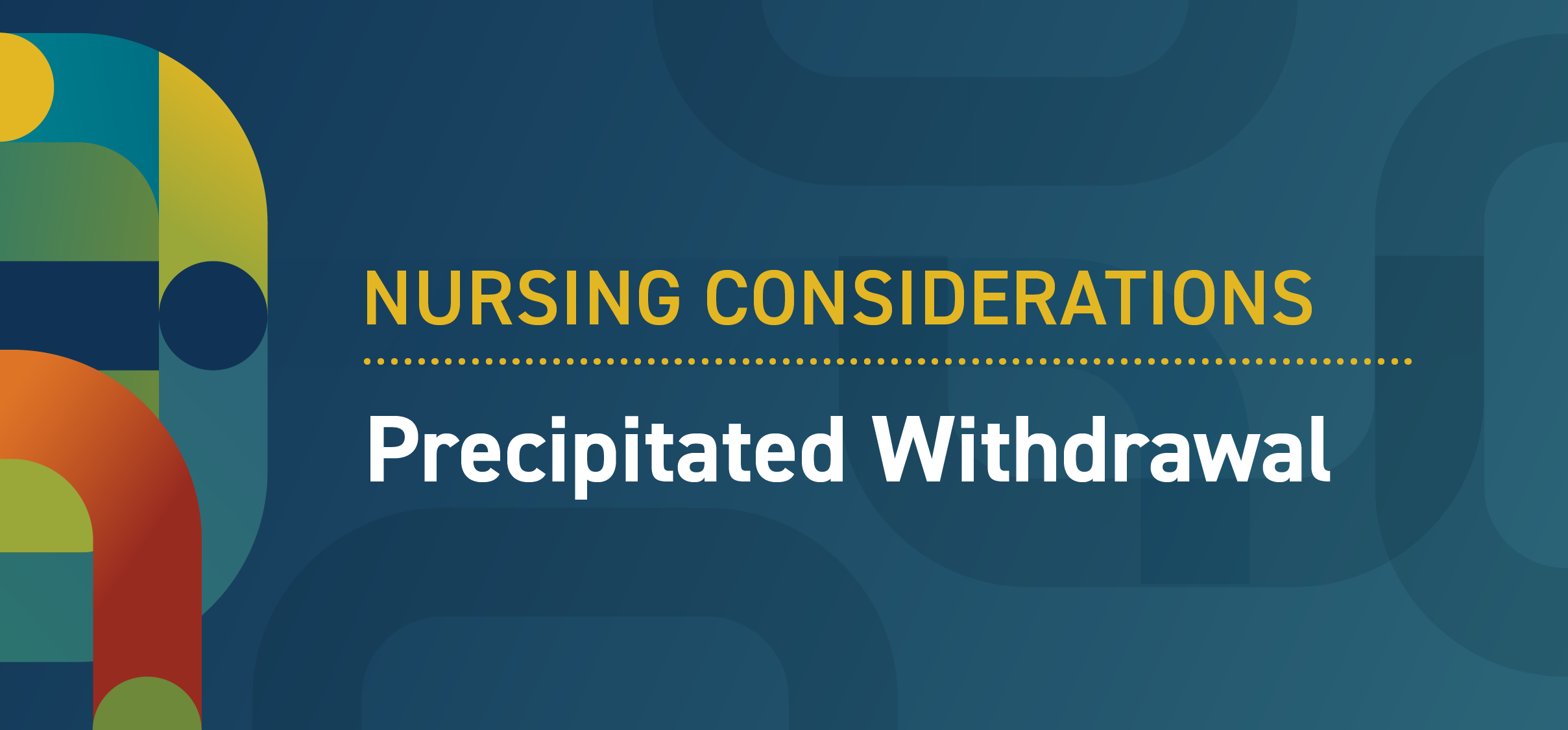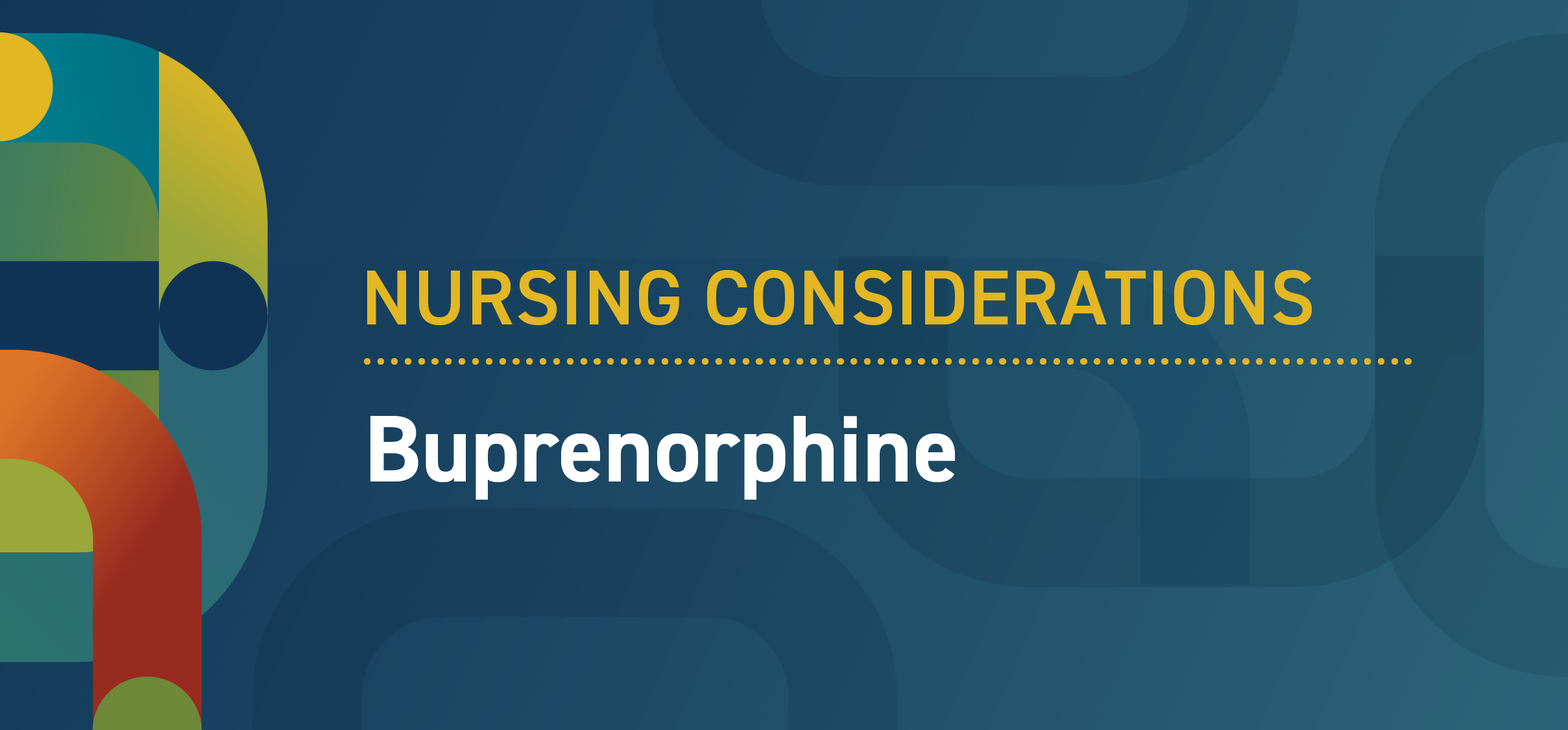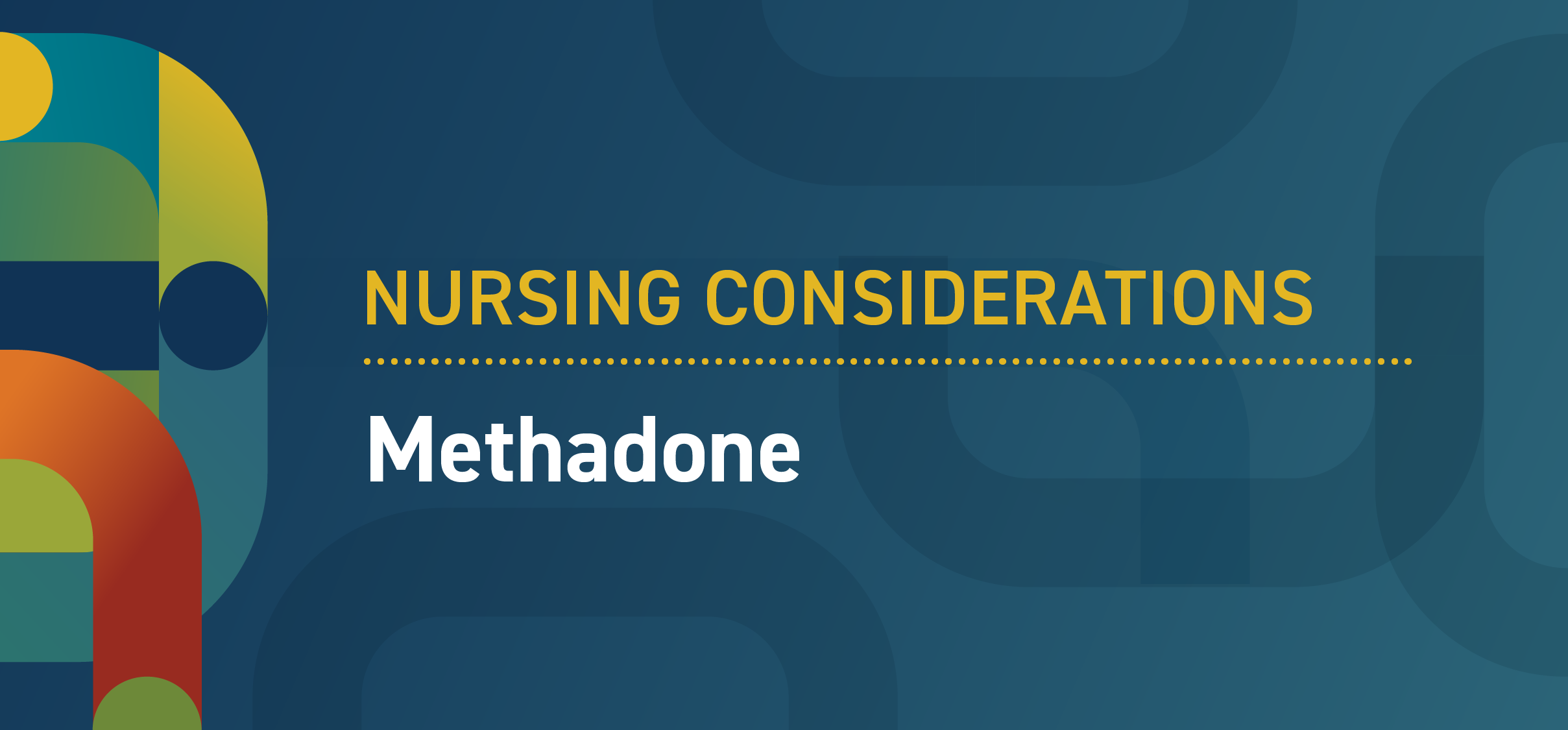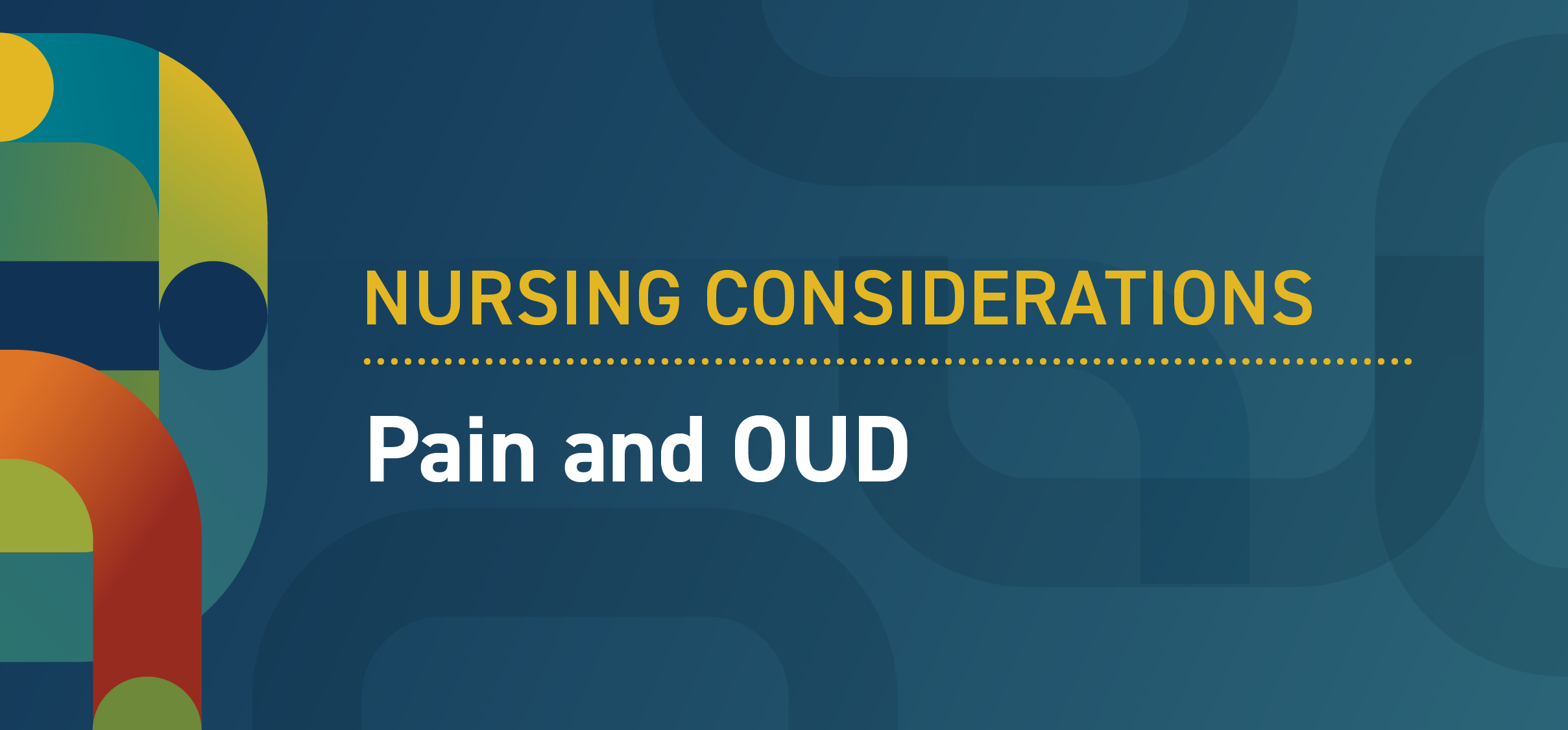FOR NURSING
Nursing considerations - precipitated withdrawal

Background
- A patient with moderate to high serum opioid levels may experience severe withdrawal symptoms if they are given naloxone (e.g., to reverse an opioid overdose) or buprenorphine. Naloxone and buprenorphine have a higher affinity for opioid receptors and replace the full agonist opioids.
- A rapid increase in COWS score 30 minutes after initial dose of buprenorphine may be precipitated withdrawal.
- Withdrawal management medications and medications for opioid use disorder (MOUD), namely methadone or buprenorphine-naloxone) should be made available ASAP to alleviate symptoms and avoid self-discharge/patient leaving AMA.
- Believe your patients reported withdrawal symptoms. Withdrawal can be excruciating. Listen to your patients and advocate for them to receive pharmacologic and nonpharmacologic interventions to alleviate symptoms.
- Opioid use disorder (OUD) is a treatable health condition. The best tools for treating this condition are methadone and buprenorphine, which cut the risk of death by over 50%. It often takes multiple treatment attempts for patients to recover.
- Patients with OUD or other substance use disorders experience a great deal of stigma and often have high levels of anxiety related to previous negative healthcare experiences. Research shows that stigma, bias, and even perceived judgement worsens symptoms and prolongs recovery. It’s vital to treat patients in a caring and supportive manner.
Actions
- Discuss the risk of precipitated withdrawal with your patient prior to buprenorphine administration. Ask the patient to report worsening symptoms right away and reassure the patient that you will treat precipitated withdrawal if it occurs.
- Quickly inform the provider if precipitated withdrawal occurs and advocate for the patient to receive withdrawal management adjunct medications and buprenorphine ASAP.
- Help the patient get comfortable. Provide cool compress to head, emesis basin/bag, turn lights off and provide a quiet environment until medications take effect.
- Reassess every 30 minutes until symptoms are stable.
- Consider other medical conditions: sepsis, cardiac conditions, DKA, thyroid, etc.
- Once symptoms are stable, let the patient know they should continue taking buprenorphine and reassure them they have made it through the hardest part, and it will get easier from here.
- Advocate for the patient to be discharged with prescriptions for adjunct medications to manage continued symptoms of withdrawal.
- Ensure the patient is discharged with naloxone. Provide overdose prevention education. Ensure patient is aware that changes in use patterns can alter tolerance and increase risk of opioid overdose.






 I’M A CLINICIAN
I’M A CLINICIAN I’M A PATIENT
I’M A PATIENT